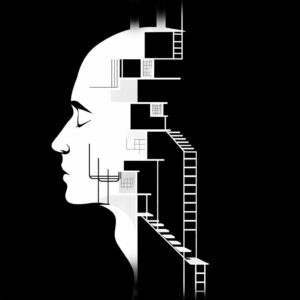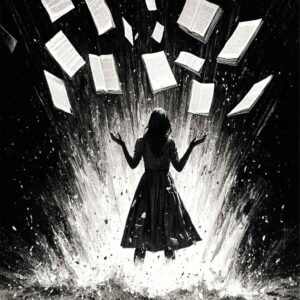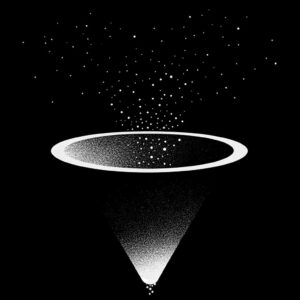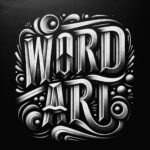Story arcs form the backbone of any narrative. They shape the journey from beginning to end, guiding characters through conflicts, growth, and resolution. Understanding different types of story arcs helps writers craft compelling stories that resonate with audiences. This article explores various story arcs, illustrating their structure and impact with examples from literature, film, and other storytelling mediums.
What is a Story Arc?
A story arc is the path a narrative takes from start to finish. It describes the rise and fall of tension and the progression of events. Typically, a story arc includes an introduction, a climax, and a resolution, but the specific shape and elements can vary widely. Different arcs evoke different emotions and serve distinct purposes within a narrative.
Types of Story Arcs
1. The Hero’s Journey
The Hero’s Journey, popularized by Joseph Campbell in his book “The Hero with a Thousand Faces,” is one of the most well-known story arcs. It follows a hero who ventures out, faces and overcomes a crisis, and then returns home transformed. This arc is divided into stages such as the call to adventure, the ordeal, and the return.
Example: In “The Lord of the Rings” by J.R.R. Tolkien, Frodo Baggins leaves the Shire, faces numerous challenges, and ultimately returns home, forever changed by his journey.
2. The Tragic Arc
In a Tragic Arc, the protagonist’s journey ends in failure or death. This arc highlights the flaws and mistakes that lead to the character’s downfall, often evoking a sense of catharsis in the audience.
Example: Shakespeare’s “Macbeth” follows Macbeth’s rise to power and his subsequent fall, driven by ambition and guilt, ending in his death.
3. The Rags to Riches Arc
This arc portrays a character’s rise from humble beginnings to great success. It focuses on growth, resilience, and transformation, often embodying the “American Dream.”
Example: In “Cinderella,” the titular character goes from being a mistreated servant to marrying the prince, highlighting her transformation and ultimate triumph.
4. The Comedy Arc
In a Comedy Arc, the narrative begins with a problem or conflict but resolves in a happy ending, often involving misunderstandings and humorous situations.
Example: Jane Austen’s “Pride and Prejudice” follows Elizabeth Bennet and Mr. Darcy as they overcome misunderstandings and prejudices, leading to a joyful union.
5. The Rebirth Arc
A Rebirth Arc focuses on the transformation of the protagonist, often following a period of darkness or challenge that leads to a renewed sense of self.
Example: In Charles Dickens’ “A Christmas Carol,” Ebenezer Scrooge undergoes a profound transformation after being visited by three spirits, emerging as a kinder, more generous person.
6. The Quest Arc
In a Quest Arc, the protagonist and often their companions set out to achieve a specific goal. The journey itself is the focus, with numerous challenges and adventures along the way.
Example: “Harry Potter and the Philosopher’s Stone” by J.K. Rowling follows Harry and his friends as they seek to find and protect the magical stone, facing various obstacles and discovering their own strengths.
7. The Overcoming the Monster Arc
This arc features a hero who must confront and defeat a formidable foe or evil. It emphasizes bravery, strength, and triumph against the odds.
Example: “Beowulf” depicts the hero Beowulf as he battles and defeats the monstrous Grendel, Grendel’s mother, and a dragon, securing his legacy as a great warrior.
8. The Voyage and Return Arc
In this arc, the protagonist travels to a strange land, faces danger, and ultimately returns home wiser and more mature.
Example: Lewis Carroll’s “Alice’s Adventures in Wonderland” follows Alice as she explores the bizarre and whimsical world of Wonderland, returning home with new insights.
Impact of Story Arcs on Narrative
Character Development
Story arcs are crucial for character development. They provide a framework for characters to grow, face challenges, and evolve. For example, the Hero’s Journey arc allows a character to start as an ordinary person and end as a hero, showcasing significant development.
Emotional Engagement
Different story arcs elicit various emotional responses. A Tragic Arc, for instance, often evokes sadness and reflection, while a Comedy Arc brings joy and relief. By choosing the right arc, writers can control the emotional journey of their audience.
Plot Structure
Story arcs guide the structure of the plot. They help writers organize events and ensure that the narrative flows logically and compellingly. The Quest Arc, for example, provides a clear path from the beginning of the journey to the achievement of the goal.
Themes and Messages
The type of story arc can highlight specific themes and messages. The Rebirth Arc often emphasizes redemption and transformation, while the Rags to Riches Arc underscores perseverance and the possibility of success against all odds.
Pacing
Story arcs also influence the pacing of a narrative. An Overcoming the Monster arc might feature intense, fast-paced action sequences, while a Rebirth Arc could have a slower, more introspective pace.
Blending Story Arcs
Writers often blend different story arcs to create complex and multifaceted narratives. For example, a novel might combine a Quest Arc with a Rebirth Arc, showing a character who not only achieves a goal but also undergoes significant personal growth.
Example: In “The Matrix,” Neo’s journey blends the Hero’s Journey with elements of Rebirth and Overcoming the Monster. He starts as an ordinary person, becomes a hero, faces formidable foes, and transforms into a savior figure.
Story Arcs in Nonfiction and Marketing Copywriting
Story arcs, traditionally associated with fiction, are equally powerful tools in nonfiction and marketing copywriting. They help structure narratives, engage audiences, and convey messages compellingly. This article explores how different story arcs can be utilized in nonfiction writing and marketing copy to captivate readers and drive action.
Story Arcs in Nonfiction
1. The Hero’s Journey
The Hero’s Journey can be applied to biographies and memoirs, depicting an individual’s journey through challenges to achieve personal growth or success.
Example: “Steve Jobs” by Walter Isaacson charts Jobs’ journey from a college dropout to the visionary leader of Apple, showcasing his struggles, failures, and ultimate triumphs.
2. The Tragic Arc
The Tragic Arc can highlight the downfall of individuals or institutions, often serving as a cautionary tale.
Example: In “The Smartest Guys in the Room” by Bethany McLean and Peter Elkind, the rise and fall of Enron is depicted, detailing the flaws and decisions that led to the company’s catastrophic collapse.
3. The Rags to Riches Arc
This arc is frequently used in inspirational stories and autobiographies to show how individuals rise from adversity to achieve success.
Example: “The Pursuit of Happyness” by Chris Gardner tells the true story of Gardner’s journey from homelessness to becoming a successful stockbroker, highlighting resilience and determination.
4. The Quest Arc
The Quest Arc fits well with travel writing and investigative journalism, where the narrative focuses on the pursuit of a specific goal or uncovering the truth.
Example: In “Into the Wild” by Jon Krakauer, the story follows Chris McCandless’s quest to find meaning and freedom in the Alaskan wilderness.
Story Arcs in Marketing Copywriting
1. The Hero’s Journey
In marketing, customers or products can be positioned as heroes embarking on a journey. This arc highlights the transformation and benefits gained from using a product or service.
Example: A fitness brand might use the Hero’s Journey to depict a customer’s transformation from a sedentary lifestyle to becoming fit and healthy, with the brand’s products playing a key role in their success.
2. The Overcoming the Monster Arc
This arc can position a product or service as the solution to a significant problem or challenge, emphasizing its effectiveness and value.
Example: An antivirus software company might use this arc to show how their product protects users from cyber threats, positioning the software as the hero that defeats the “monsters” of malware and viruses.
3. The Rags to Riches Arc
The Rags to Riches arc can illustrate how a product or service helps customers achieve success and improve their lives, often starting from a point of disadvantage.
Example: A financial advisory firm might showcase a case study of a client who went from struggling with debt to achieving financial stability and wealth, thanks to their services.
4. The Quest Arc
This arc can be used to narrate the journey of a company or brand in achieving a significant milestone or goal, creating a compelling story around their mission and values.
Example: A startup might tell the story of its founders’ quest to revolutionize an industry, detailing the challenges they faced and how their innovative product emerged as the solution.
The Foundation of Storytelling
Story arcs are foundational to effective storytelling, whether in fiction or nonfiction. They provide a structured path for narratives, ensuring that stories are compelling, cohesive, and emotionally resonant. In fiction, arcs like the Hero’s Journey or Tragic Arc drive character development and plot progression, creating engaging tales that captivate audiences. In nonfiction and marketing, these arcs help convey complex information, personal journeys, and brand stories in ways that are relatable and memorable. By leveraging different story arcs, writers can craft narratives that not only entertain but also inspire and inform, making their messages more impactful and enduring. Understanding and utilizing story arcs is essential for anyone looking to tell a powerful and engaging story, regardless of the medium.









